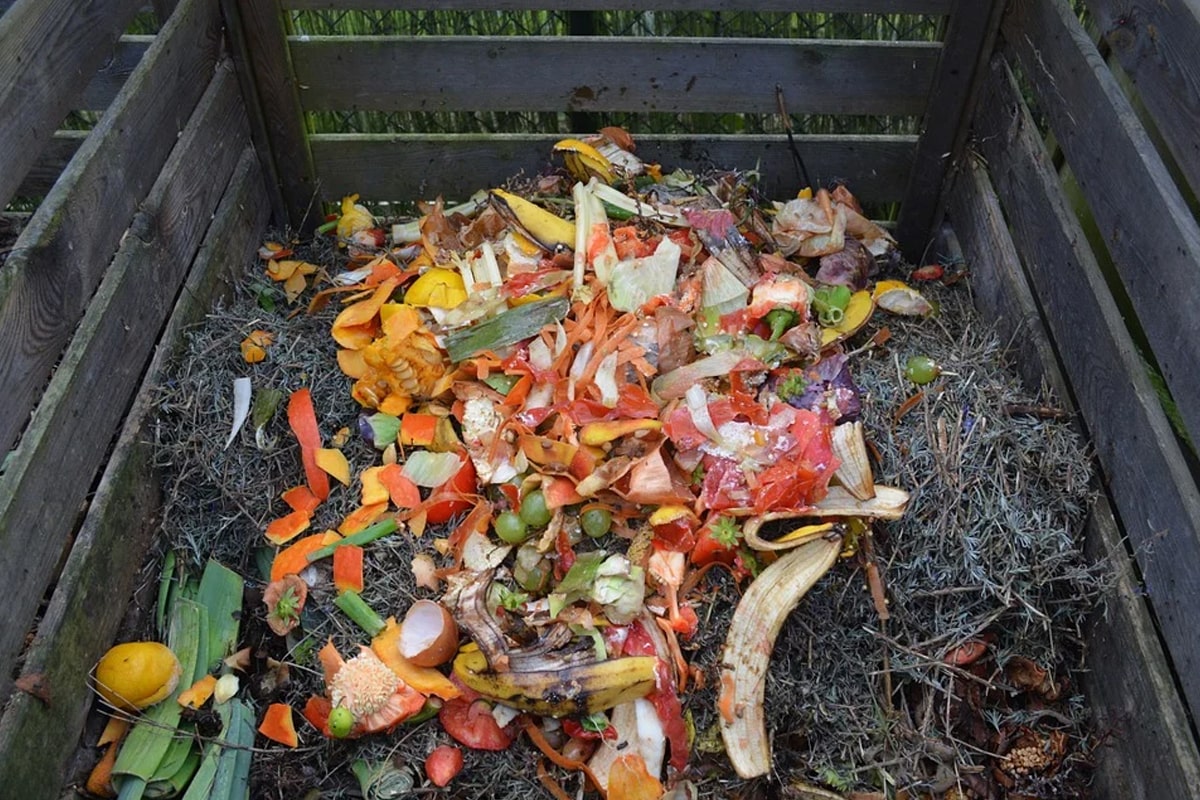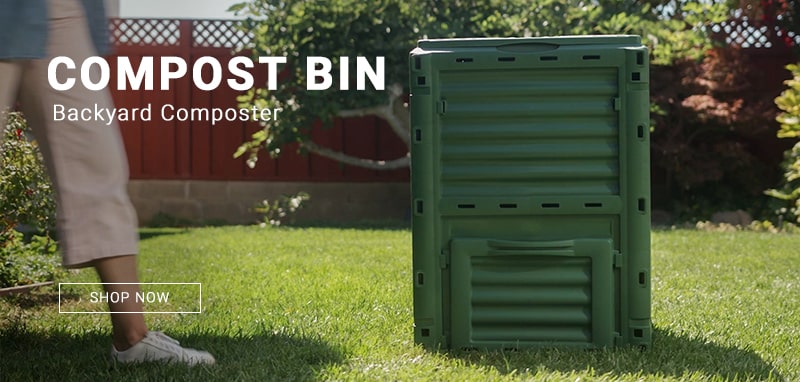Collecting and processing food wastes have a detrimental impact on our environment. Composting is the best way to minimize household food wastes and leftovers.
Backyard composting is easy, good for the environment, and beneficial to the garden. And if you think that only those with wide-open spaces could build their compost, come to think of it again!
Contents []
Even if you live in a single-room apartment, it’s possible to build and maintain a compost pile. You can make your own compost with just a few tips and following our composting cheatsheet. But if you are ready to compost kitchen scraps and have no clue where to start, continue reading this guide below:
2 Methods of Composting
Composting has two primary methods, hot and cold composting.
Hot Composting: A hot compost should have a temperature range of about 110°F to 140°F - temperatures that kill disease-causing microorganisms and weeds. Hot compost is the quickest way of turning kitchen scraps into garden gold, but it will require more attention and maintenance to keep the temperature stable. The size of the compost pile, the composting materials used, and the layering of the ingredients will have a massive impact on the success of the setup. The ideal size for hot compost is about 3 to 4 feet cube.
Cold Composting: A cold compost requires less attention and effort to maintain, but it will take a year or so before the kitchen scraps are converted into humus. This method is best described as an “add-as-you-have-materials” pile. Just layer the compost materials and turn now and then. This produces little internal heat, so that the material breakdown will take about 6 to 12 months.
Woody materials, for example, take a longer time to break down completely, so if you’re using more of this material, it will take some time before the compost is ready to use.
Where to Setup Your Compost
Where you will set up your compost pile and decide what kind of compost setup you’ll use are two of the most important things you need to consider before preparing your kitchen wastes for composting.
While most people think that composting requires a lot of space, that’s not the case at all. You’ll only need a small spot to build a small compost pit. You don’t even need a yard to do this. If you live in a condo or apartment, it’s possible to build a compost pile too. Here are tips on setting up your compost:
DIY Compost Bucket

If you don’t have much space for a sizable compost pit, this is a great alternative. A compost bucket is space-efficient, easy to set up, and even easier to manage.
Just use an old bucket and turn it into a compost bin. Drill holes on the bottom and sides of the bucket to promote air circulation and protect the organic wastes from becoming anaerobic. Set a tray under the bucket to catch the excess moisture as the kitchen wastes decompose - called compost tea, which you can use as liquid fertilizer, as is.
Layer the organic waste, alternating between brown and green scraps. The bucket won’t hold much, but you can create as many compost buckets as you like. It will take about 40 to 60 days before the organic wastes fully decompose, and once it’s emptied, you can reuse the bucket for another round of composting.
Ready-Made Compost Bin

If you’re using a commercial or ready-made compost bin, it’s a lot easier for composting. All you have to do is choose a spot in your yard to set the container, layer your organic wastes (green and brown) with a shovel, and you’re done.
The great thing about buying a compost bin is that it comes with features that will speed up the decomposition process, reduce odor problems while holding MORE contents to maximize every composting cycle. For example, the ECOgardener compost bin is about 32x24x24 in size and holds about 80 gallons of organic wastes. It will yield a lot of organic fertilizer for your garden.
The bottom of the compost bin opens up so that the compost is always in contact with the soil. This speeds up the decomposing process while also preventing excess moisture from pooling into the bin. Instead of buying a compost bin, you can always use a regular bin but be sure that the container provides excellent air circulation; otherwise, the compost materials might not break down fast enough.
Pit Composting
Pit composting is a compost pile set up in the ground. Just dig a 12 to 14-inch hole and start layering your green and brown composting materials. Once buried, the microbes and earthworms will break down the composting materials. When the composting materials have been fully broken down, the compost is ready for soil amendment.
The great thing about pit composting is that it’s so easy to set up and is relatively low maintenance. But, be sure that the environment is ideal for composting. Foul odors could attract burrowing animals, so cover the compost pit and avoid adding scraps that are not meant to be added in a compost pit. Let the composting material break down as long as possible to destroy harmful bacteria. Turn the compost pit several times a month to speed up the breakdown of organic materials.
IMPORTANT: Different localities have different guidelines for composting, so check with local authorities to see if composting is allowed in your neighborhood.
Compost Tumbler
A compost tumbler is similar to a compost bin, but it features a mechanism that allows you to tumble the entire container to turn the compost materials. Also, the bin is elevated to promote better air circulation and reduce the pooling of excess water.
A compost tumbler is an excellent choice for people with small yards. Since the bin is space-efficient, it will fit most spaces.
Using a compost tumbler is easy because you just need to roll the mechanism to turn the compost. You're not using a shovel or a rake to turn the compost manually. But the design isn't perfect. For one thing, the bin doesn’t hold much organic waste, so you're not making the most out of every composting cycle. This is fine if you have a small garden, but for those who have a large garden or individuals who want to make sacks of compost for profit, this is not the best setup to try.
Also, the mechanism that holds the compost bin to the sides will wear down quickly. Organic wastes are pretty heavy, and if you turn the tumbler several times per week, certain components will break down faster and need constant replacement. Not a problem if you’re quite the handyman, but for those who have no idea how to make repairs, this is something to keep in mind.
Because the compost tumbler is elevated, earthworms and other beneficial critters cannot access the composting materials, which will slow down the decomposition process. Yes, the tumbler makes compost aeration easy, but that’s about it.
ECOgardener Outdoor Compost Bin for Easy Composting
It’s essential to sort kitchen scraps in either green or brown materials because it ensures the proper decomposition of the materials. If you’d like to give composting a try, getting a compost bin is the most convenient and space-efficient option. You can check out our heavy-duty compost bin and discover the benefits of composting for the garden. Shop now at ECOgardener for hassle-free gardening solutions.




